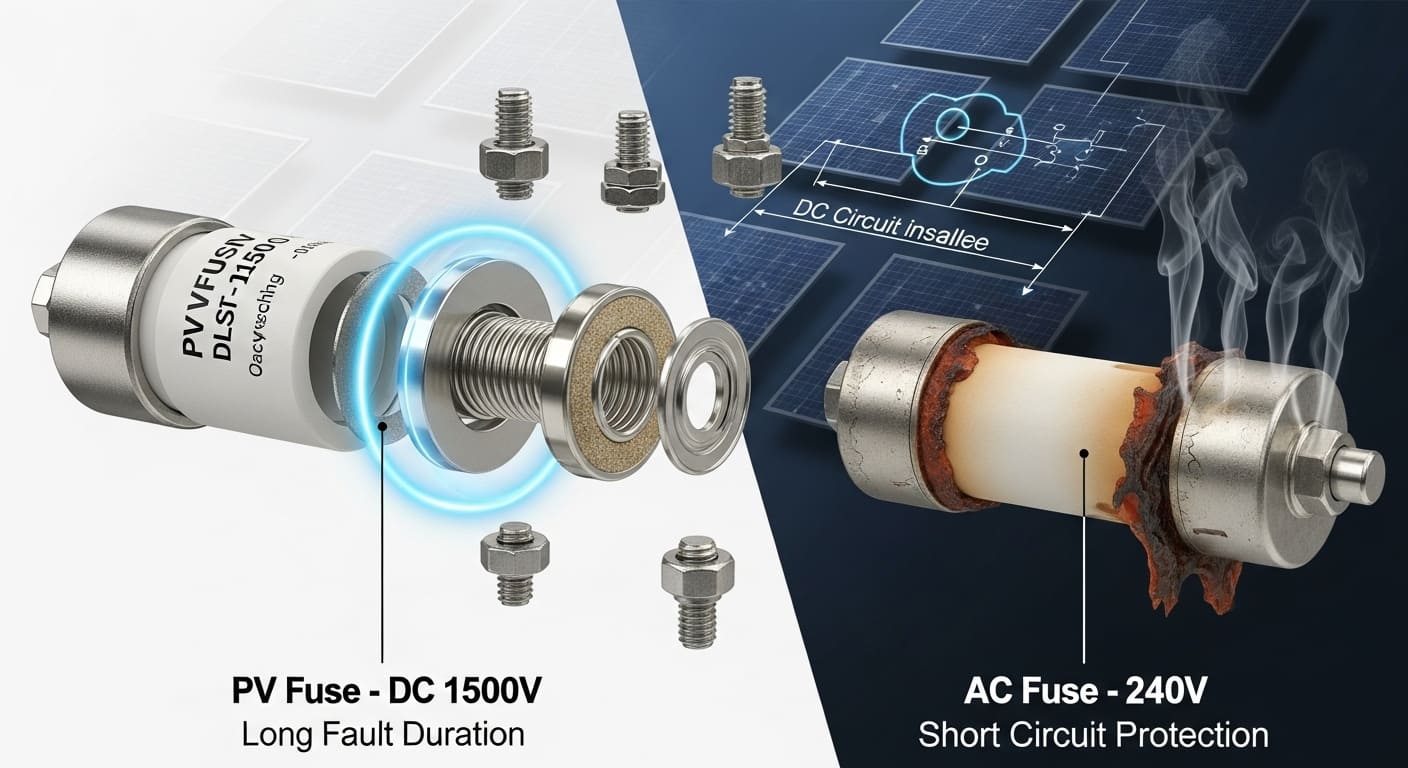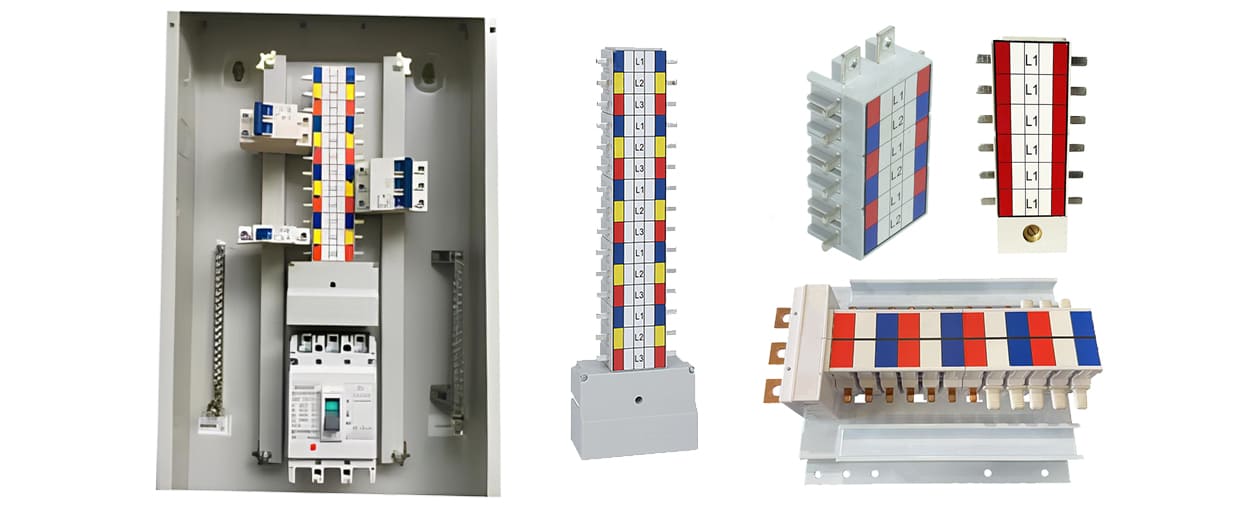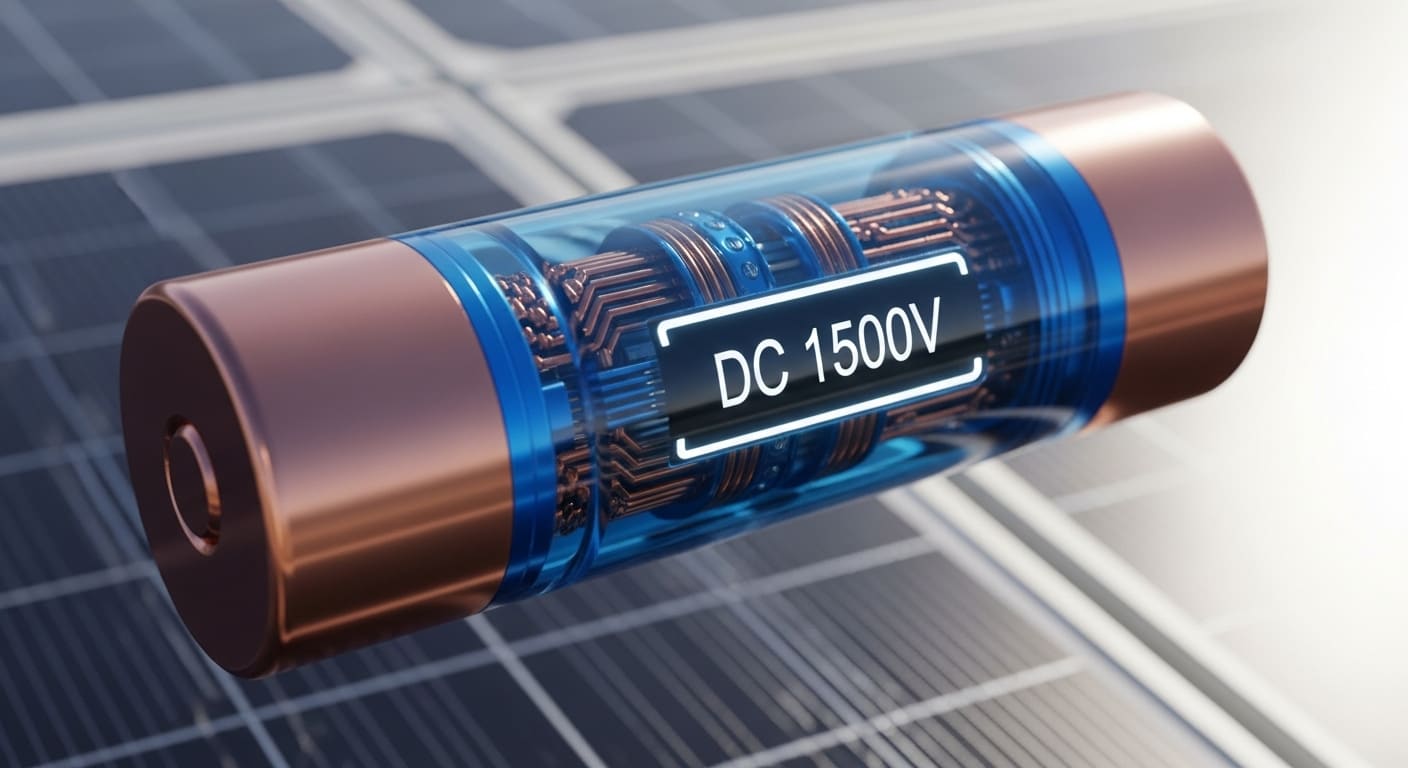Ever blown a fuse1 and wondered why your system failed? This frustration often stems from not grasping fuses' true role. Proper understanding prevents costly downtime and boosts safety.
A fuse is a safety device that protects electrical circuits by melting a metal wire when current exceeds safe levels, breaking the circuit to stop overloads or shorts. It acts as a weak link in the system to safeguard equipment and users.

Many people see fuses as basic parts, but they hold deeper value in electrical design. Let me share how I've helped clients rethink this to improve their setups.
Fuse symbol?
Confused by wiring diagrams full of symbols? Misreading them can lead to installation errors and hazards. Clear knowledge ensures safe and correct setups.
The fuse symbol2 in electrical diagrams is a rectangle with a diagonal line across it, representing the breaking element. In IEC standards3, it shows as a straight line with a wiggle or bar, while ANSI uses a circle with a cross.

Standard Symbols Explained
In my years at Fuspan, I've reviewed countless diagrams from clients in Saudi Arabia and beyond. One panel builder once mixed up symbols, causing a delay in their factory project. To avoid this, let's break down common fuse symbols.
Fuses use simple icons to show their position in circuits. The basic IEC symbol is a rectangle crossed by a line, indicating the fusible link. For gG fuses, common in general protection, it might include a small circle. In North American standards, it's often a zigzag line inside a circle.
Key Variations by Standard
Different regions use slight variations. Here's a quick table:
| Standard | Symbol Description | Common Use |
|---|---|---|
| IEC 60617 | Rectangle with diagonal line | Global low-voltage systems |
| ANSI/IEEE | Circle with internal cross or filament | US industrial panels |
| GB (China) | Similar to IEC, with added text labels | Export-compliant products |
This clarity helps engineers like Mr. Rasem, a procurement lead I worked with, match our fuse holders to their busbar designs without rework.
Practical Tips for Reading Diagrams
When diving into schematics, always check the legend. In Fuspan's documentation, we label symbols clearly for English-speaking teams. Once, a Southeast Asian client overlooked the breaking time notation next to the symbol, leading to mismatched protection. I advised adding color codes—red for fast-acting fuses—which cut their errors by half. Understanding these symbols not only speeds installation but also ensures compatibility with breakers and disconnects. For modular systems, like our NT/NH bases, precise symbol reading prevents layout issues in new energy panels. This step-by-step approach builds robust systems that last.
Fuse characteristics?
Overwhelmed by fuse specs that seem endless? Picking the wrong one risks equipment damage or false trips. Smart selection saves time and money.
Key fuse characteristics include rated current, voltage, breaking capacity4, I²t value5, and response time. Rated current is the max continuous load; breaking capacity handles fault currents; I²t measures energy to melt the element; response time is fast, medium, or slow.
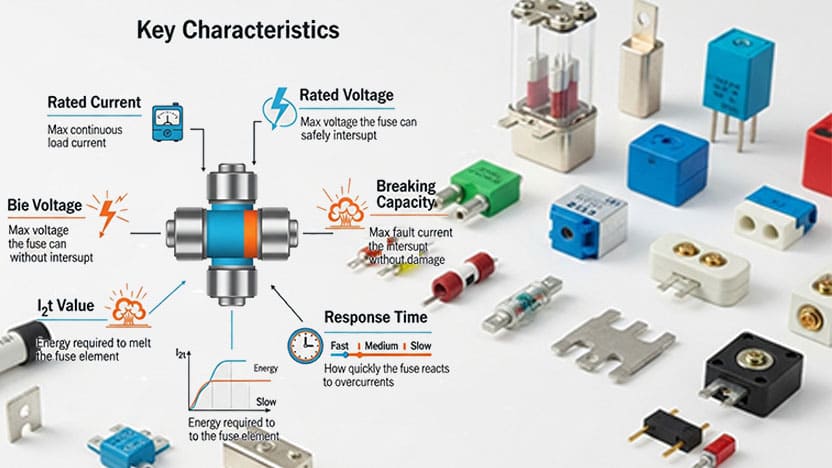
Core Characteristics Breakdown
From my experience advising clients on low-voltage protection, fuse characteristics go beyond basics. A Saudi panel builder once focused only on current rating, ignoring I²t, which caused repeated failures in their automation lines. Let's explore these traits.
Rated voltage ensures the fuse works up to system limits, like 690V for our industrial products. Breaking capacity, often 80kA, defines short-circuit handling. I²t, or let-through energy, is crucial—it quantifies heat absorbed before blowing, protecting sensitive downstream gear.
Detailed Parameters Table
Here's a structured view of main characteristics:
| Characteristic | Description | Why It Matters |
|---|---|---|
| Rated Current (In) | Max steady current (e.g., 10A-500A) | Matches load to avoid nuisance trips |
| Voltage Rating (Un) | Max operating voltage (e.g., 500V AC) | Prevents arc flash in faults |
| Breaking Capacity (Icn) | Max fault current interrupted (e.g., 100kA) | Ensures safety in high-fault areas |
| I²t Value | Energy integral for melting (A²s) | Coordinates with other devices for selectivity |
| Response Time | Fast (<1ms), medium, or slow | Suits application—fast for semiconductors |
Real-World Application Insights
In Fuspan's engineering support, we stress coordination. For instance, in a new energy project, I guided a client to select fuses with low I²t for solar inverters, reducing stress on panels. Clearing time, another key trait, affects how quickly the circuit opens—vital for minimizing damage. Clients handling large orders, like Mr. Rasem's firm, benefit from our ISO-tested specs, ensuring reliability. By evaluating these holistically, companies cut downtime by 30-40%, as I've seen in field implementations. This deeper grasp turns fuses from commodities into strategic assets.
Types of fuses?
Struggling to choose the right fuse type for your project? Wrong picks lead to inefficiencies or failures. The right type enhances protection and fit.
Fuses come in types like cartridge, blade, resettable (PTC), and semiconductor. Cartridge fuses suit high-current industrial use; blade types fit automotive; resettables reset after tripping; semiconductor fuses6 protect sensitive electronics with fast action.
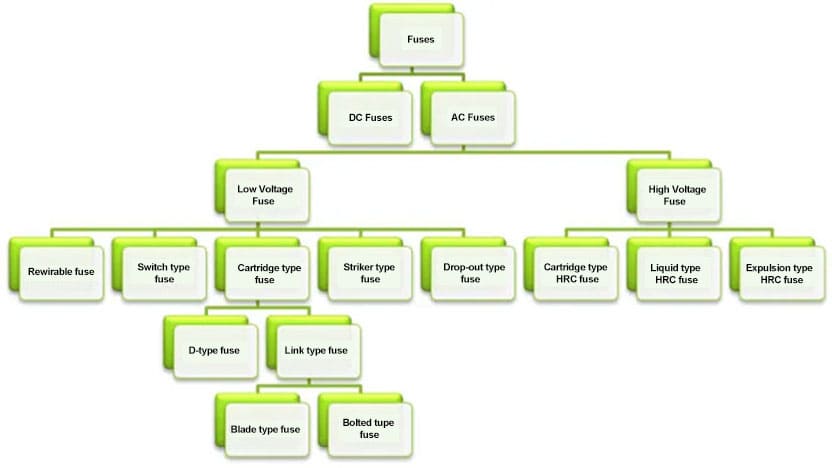
Main Fuse Categories
Working with Fuspan's global clients, I've seen confusion over fuse types cause project delays. A South American distributor once ordered blade fuses7 for industrial panels, needing cartridges instead. Let's classify them clearly.
Cartridge fuses, like our NT/NH series, enclose the element in a tube for high breaking capacity. Blade fuses have flat contacts, ideal for low-voltage automotive or control circuits.
Types Comparison Table
To help, here's an overview:
| Type | Key Features | Typical Applications |
|---|---|---|
| Cartridge (NH/NT) | Cylindrical, high Icn (up to 200kA) | Industrial panels, motor protection |
| Blade (Automotive) | Flat blade terminals, compact | Cars, appliances, low amps |
| Resettable (PTC) | Self-resets after cooling | Electronics, battery packs |
| Semiconductor (aR) | Ultra-fast response, low I²t | Drives, inverters, new energy |
| Liquid (Oil-filled) | Immersed in oil for cooling | Older high-voltage systems |
Selection and Customization
Each type serves specific needs. In my interactions with engineering teams, I emphasize compatibility—our modular holders support multiple types for flexible busbar systems. For a Middle Eastern client building distribution boxes, switching to semiconductor fuses cut inverter faults by optimizing speed. Fuspan's OEM services allow custom types, like fused disconnects for AC/DC setups. Understanding these prevents mismatches, especially in modular assemblies where space and ratings vary. By matching types to scenarios, like fast-acting for renewables, clients achieve durable, export-ready solutions. This knowledge has helped many, including recurring orders from panel builders, streamline their procurement.
Applications of fuses?
Unsure where fuses fit in your electrical setup? Ignoring them risks overloads in critical areas. Targeted use protects assets effectively.
Fuses apply in industrial motor control, power distribution panels, renewable energy inverters, automotive circuits, and consumer appliances. They guard against shorts and overloads in AC/DC systems, ensuring safe operation.
Diverse Application Areas
In my role at Fuspan, I've tailored fuses for clients worldwide, from Saudi factories to Asian solar farms. One engineering manager overlooked fuse placement in automation, leading to a shutdown. Applications span many sectors.
In power distribution, fuses like our busbar blocks protect feeders. For new energy, they shield inverters from surges. Automotive uses blade types for wiring harnesses.
Applications by Sector Table
Key uses include:
| Sector | Fuse Role | Example Products |
|---|---|---|
| Industrial | Motor and transformer protection | NH cartridge in disconnectors |
| New Energy | Inverter and battery safeguarding | Semiconductor fuses in DC boxes |
| Commercial | Panel and lighting circuits | Blade in MCB assemblies |
| Automotive | Wiring and ECU protection | Low-amp blade types |
| Residential | Appliance overload prevention | Glass tube in outlets |
Implementation Strategies
Deeper integration involves coordination. For a client in Southeast Asia assembling outdoor boxes, I recommended fuses with high breaking capacity for harsh environments, extending equipment life. In factory automation, placing fuses near loads minimizes arc risks. Fuspan's vertical switch disconnectors combine fuses with isolation for easy maintenance. Personal story: Guiding Mr. Rasem's team on fuse rails for building systems resolved their compatibility woes, enabling quick installs. By mapping applications to characteristics, like I²t for selective tripping, systems gain reliability. This approach, drawn from our ISO processes, supports mass production and export, reducing unplanned issues across diverse layouts.
Advantages of fuses?
Doubting if fuses outperform other protectors? Subpar choices increase costs and risks. Fuses offer proven benefits for reliable systems.
Fuses provide fast fault clearing, high breaking capacity, cost-effectiveness, and easy replacement. They interrupt currents precisely without maintenance, outperforming breakers in selectivity and affordability for many setups.
Primary Benefits Overview
Through Fuspan's client projects, I've witnessed fuses' edge over alternatives. A panel builder in South America switched from breakers to fuses, slashing costs without losing safety. Advantages include speed and simplicity.
Fuses blow in milliseconds, limiting damage. Their one-time use ensures no reuse errors, unlike some breakers.
Advantages Comparison Table
Versus circuit breakers:
| Advantage | Fuse Benefit | Vs. Breaker |
|---|---|---|
| Response Speed | Ultra-fast (sub-cycle) | Slower mechanical action |
| Cost | Low initial and replacement | Higher upfront |
| Selectivity | Excellent I²t coordination | Good but complex settings |
| Maintenance | None needed | Periodic testing required |
| Breaking Capacity | Up to 200kA standard | Often lower without add-ons |
Strategic Value in Practice
In field experience, comprehensive fuse strategies yield big wins. Clients treating fuses as afterthoughts face higher downtime; those focusing on nuances like clearing times see 30-40% reductions. For instance, in a new energy distribution project, our fuses' durability cut failures in environmental exposure. They're elegant—mechanical algorithms deciding in real-time. For Mr. Rasem's modular needs, fuses' robustness eases assembly, handling loads reliably. Fuspan's tested components ensure export compliance, with full traceability. This not only protects but optimizes longevity, making fuses indispensable for integrators seeking stable suppliers.
Conclusion
Fuses are vital protectors that, when understood fully, enhance electrical safety and efficiency. Choose wisely to cut downtime and build lasting systems.
-
Understanding the role of a fuse is crucial for ensuring safety and preventing equipment damage. ↩
-
Explore the meaning of fuse symbols to avoid installation errors and ensure safety. ↩
-
Understanding IEC standards helps in correctly interpreting electrical diagrams globally. ↩
-
Understanding breaking capacity is essential for ensuring safety in high-fault areas. ↩
-
Explore the significance of I²t value in selecting fuses for sensitive equipment. ↩
-
Discover how semiconductor fuses protect sensitive electronics with fast action. ↩
-
Explore the use of blade fuses in automotive and low-voltage applications. ↩

